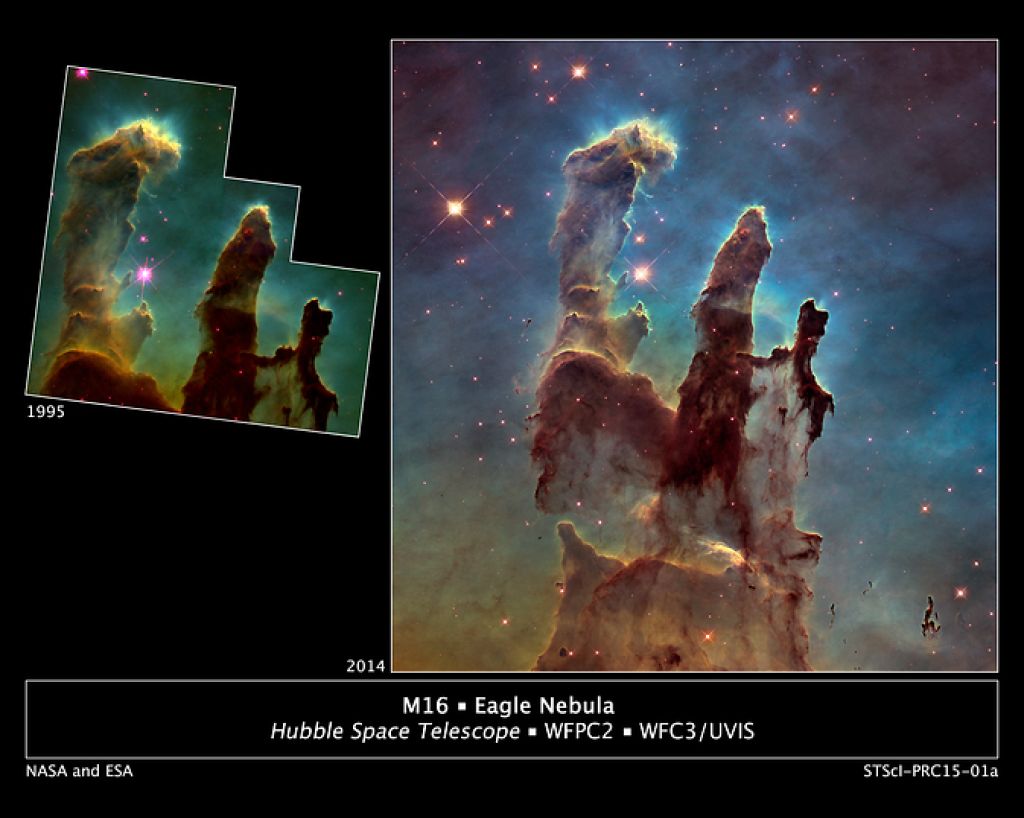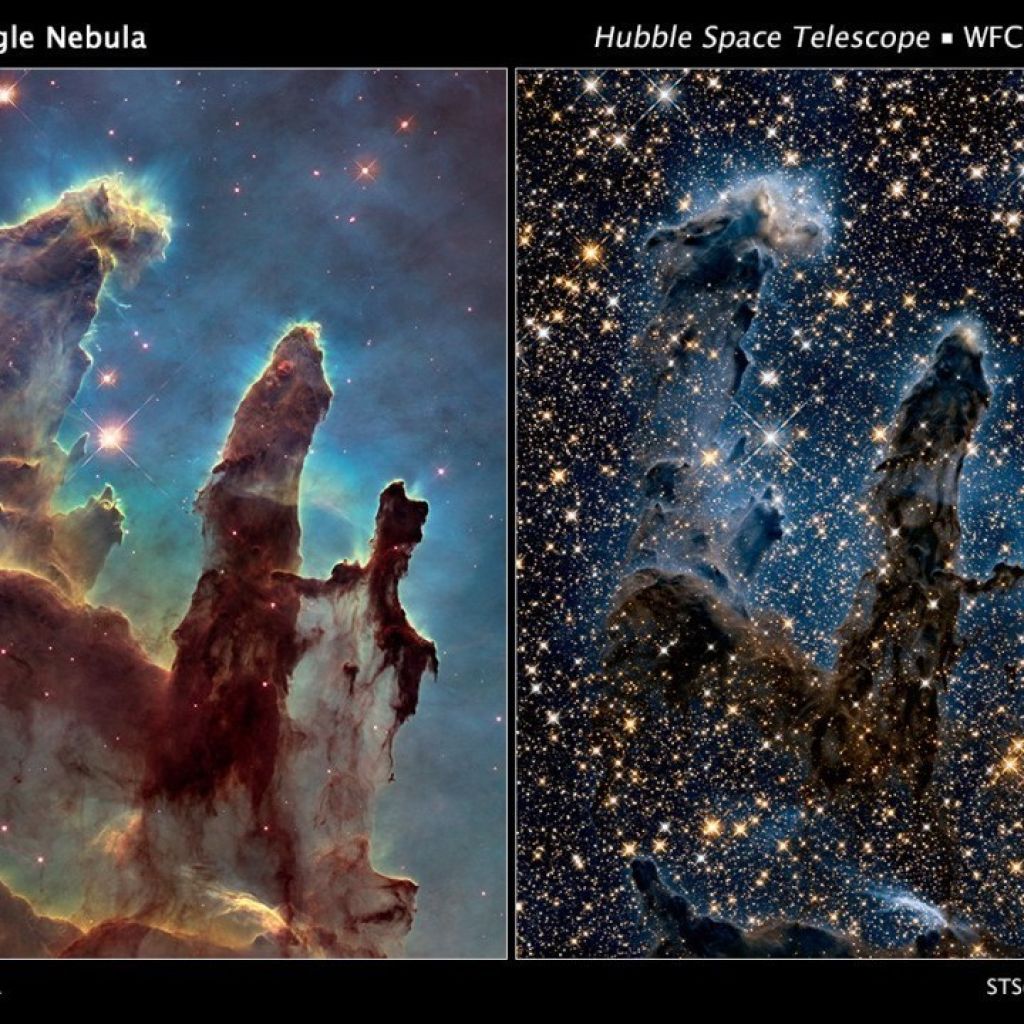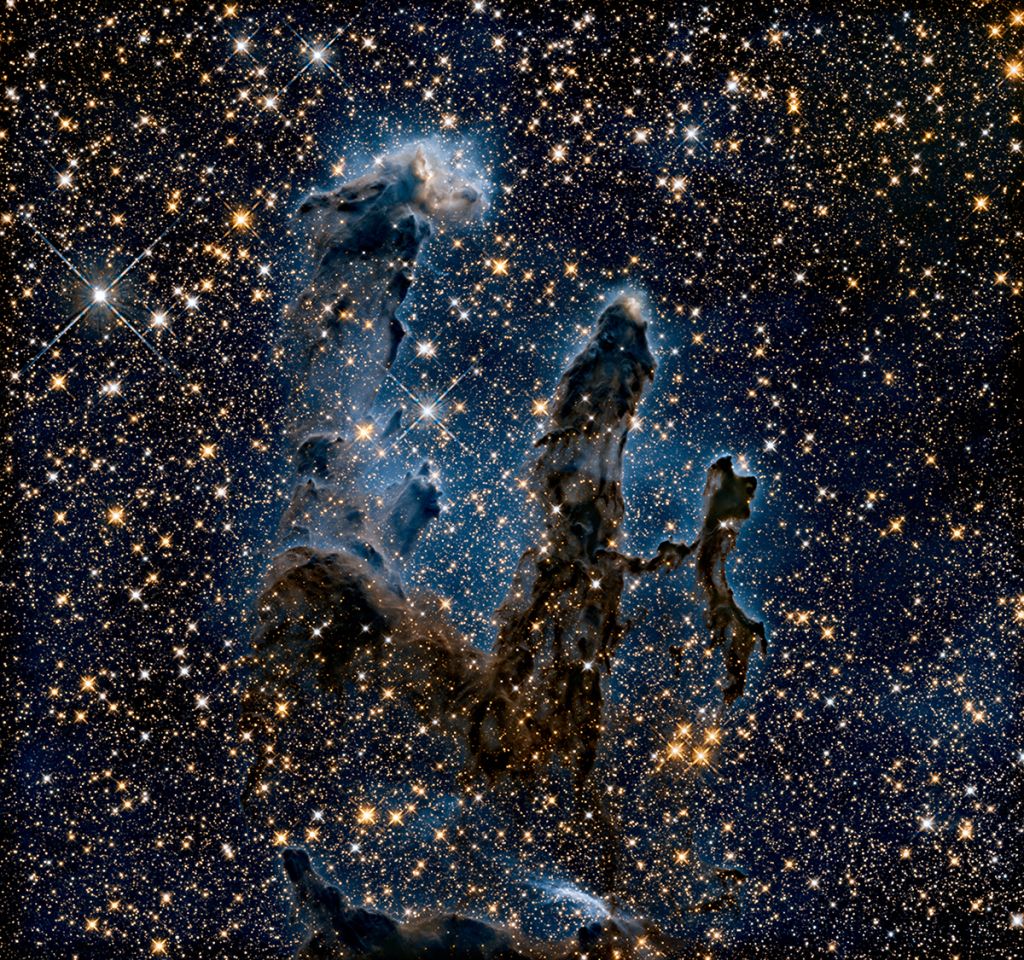Then and now for the ‘Pillars of Creation’
The North American Space Agency (NASA) has released dramatic new images of its iconic “Pillars of Creation”, originally photographed by the Hubble Space Telescope in 1995.

The original image, taken in the region of the Eagle Nebula or M16, revealed awe-inspiring detail of three giant columns of cold gas bathed in ultraviolet light, in what astronomers call a “star-forming region”. When first released, the image quickly captured popular imagination, becoming a pop art hit in movies, on T-shirts and even a postage stamp.
So, to celebrate the 25th anniversary of the Hubble Space Telescope in April this year and the 20th anniversary of the release of the image itself, NASA has revisited the pillars and revealed even more detail by capturing fresh images at twice the resolution of the original.
The new images, unveiled at a meeting of the American Astronomical Society in Seattle, were taken in visible as well as near-infrared light. The infrared light penetrates the gas and dust, and now reveals infant stars that were previously hidden away inside the pillars.

NASA says to get the new images, astronomers combined several Hubble exposures to assemble a wider view of the pillars, which stretch about five light years high in the new image. The images were taken with Hubble's Wide Field Camera 3.

The image above was taken in near-infrared light, which can penetrate the gas and dust, revealing stars behind the nebula as well as hidden away inside the pillars.
Astronomers Paul Sowen of Arizona State University in Tempe in the United States and Jeff Hester, formerly of Arizona State University, led the original Hubble observations of the Eagle Nebula.
While they knew the physical processes weren’t unique to the Eagle Nebula, at a distance of just 6 500 light years, M16 made for a dramatic example when it was photographed.
Said Scowen: “These pillars represent a very dynamic, active process. The gas is not being passively heated up and gently wafting away into space. The gaseous pillars are actually getting ionised, a process by which electrons are stripped off of atoms and heated up by radiation from the massive stars. And then they are being eroded by the stars’ strong winds and barrage of charged particles, which are literally sandblasting away the tops of these pillars.”
The Hubble Space Telescope is an international project between NASA and the European Space Agency. NASA explores the solar system and beyond to understand the universe. “We seek to unravel the secrets of our universe, its origins and evolution, and search for life among the stars. (The) announcement shares the discovery of our ever-changing cosmos and brings us closer to learning whether we are alone in the universe,” said NASA.
Go stargazing at Maropeng
If you are fascinated by space, why not join one of Maropeng’s stargazing evenings? The next one is on 21 February, when resident astronomer Vincent Nettman will take you on a journey through space and time when he introduces the night sky and talks about the evolution of astronomy as a science. The ticket includes a gourmet dinner and you can book an overnight stay at the Maropeng Hotel. Details will be made available on the online shop.